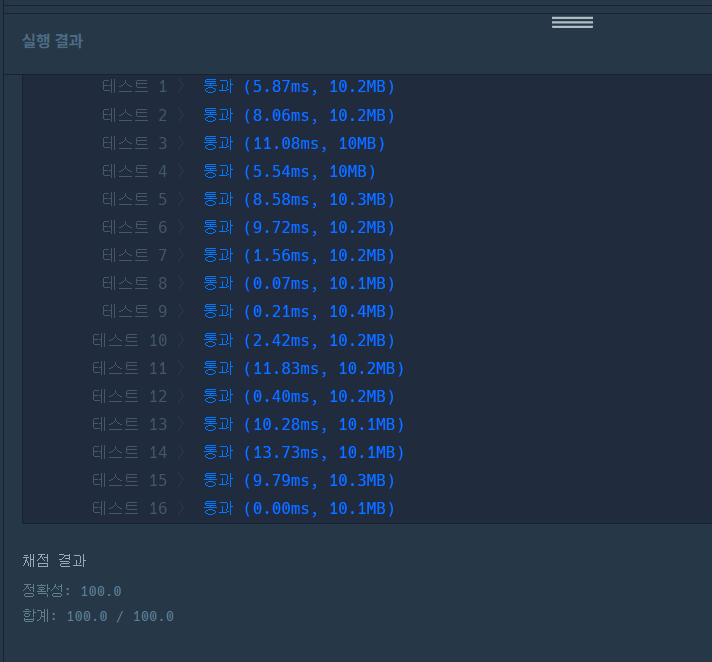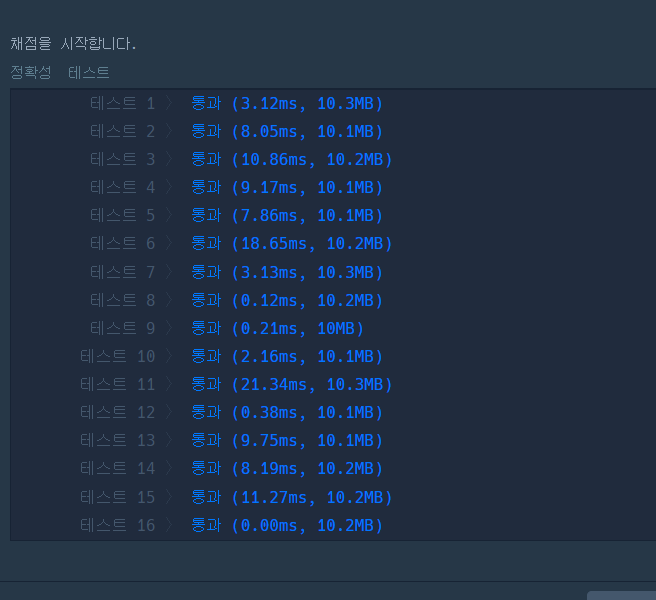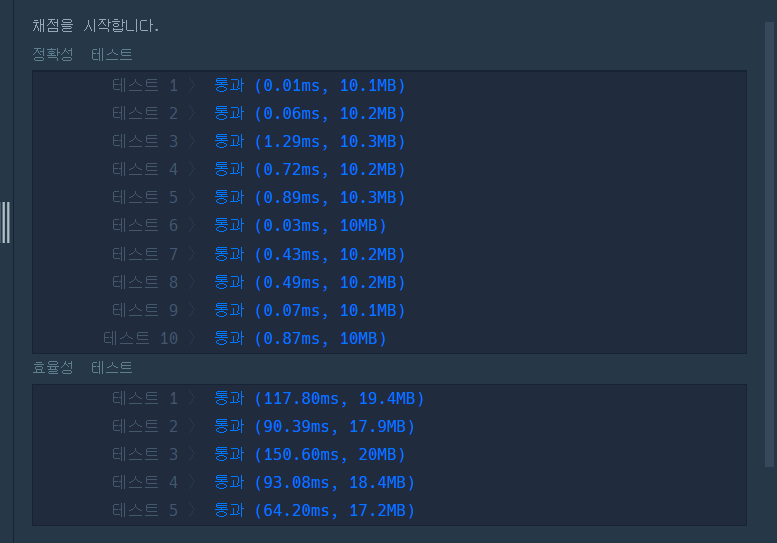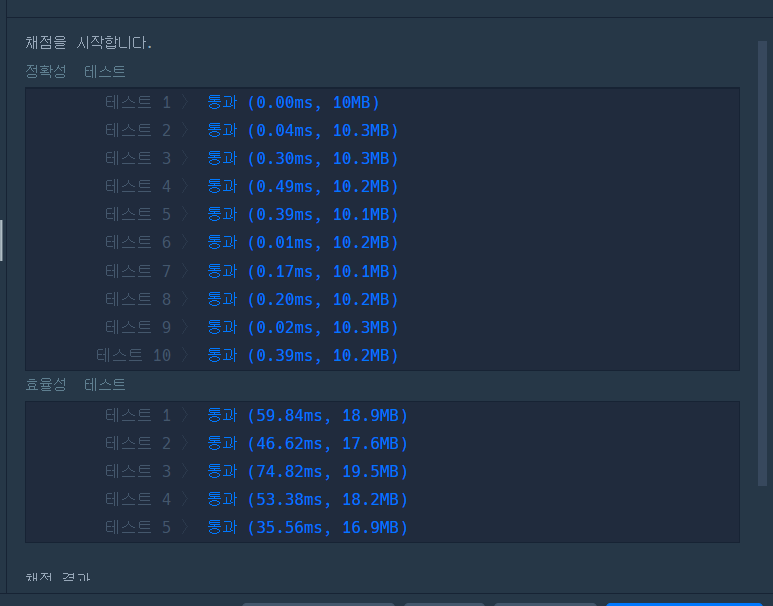1.정렬-K번째수
def solution(array, commands):
answer=[]
for condition in commands:
firstArray = array[(condition[0]-1):condition[1]]
secondArray = sorted(firstArray)
answer.append(secondArray[condition[2]-1])
return answer
2.정렬-H-Index
https://sumin-itstory.tistory.com/6
깊은 복사
https://inkkim.github.io/python/%ED%8C%8C%EC%9D%B4%EC%8D%AC-%EB%A6%AC%EC%8A%A4%ED%8A%B8-%EB%B3%B5%EC%82%AC/
def solution(citations):
citations.sort()
hCount = 0
answer = 0
while len(citations) > 0:
maxCit = max(citations)
if maxCit <= citations.count(maxCit)+hCount:
answer = maxCit
break
else:
citations.pop()
hCount += 1
return answer
print(solution([10, 100])) # 0
print(solution([33, 30, 20, 15, 7, 6, 5, 4]))
print(solution([1, 8, 5, 3, 4, 9]))def solution(citations):
#입력값 깊은 복사
entCitations = [] + citations
citations.sort()
#비교한 뒤 뽑아낼 수 카운터
hCount = 0
answer = 0
#가장 큰 수부터 비교하면서 비교한 수는 뽑아내고 입력 배열의 크기가 0이 될 때까지 반복
while len(citations) > 0:
maxCit = max(citations)
if maxCit <= citations.count(maxCit)+hCount:
#[6, 6, 6, 6, 6, 1]과 같은 경우, 6 다음에 1을 비교하게 되는데,
#그 사이가 h-index가 되는 경우, hCount가 곧 h-index가 된다.
if maxCit < hCount:
answer = hCount
return answer
answer = maxCit
return answer
else:
citations.pop()
hCount += 1
#[10, 100]과 같은 경우 아래 조건문이 없는 경우 h-index가 0이 된다.
#총 논문의 수가 곧 h-index가 된다.
if min(entCitations)>=len(entCitations):
answer = len(entCitations)
return answer
print(solution([10, 100])) # 0 답은 2
print(solution([33, 30, 20, 15, 7, 6, 5, 4]))
print(solution([6, 6, 6, 6, 6]))
print(solution([2, 2, 2, 3, 3, 4]))
print(solution([6, 6, 6, 6, 6, 1])) #1 답은 5
def solution(citations):
answer = 0
if min(citations)>=len(citations):
answer = len(citations)
citations.sort()
hCount = 0
while len(citations) > 0:
maxCit = max(citations)
if maxCit <= citations.count(maxCit)+hCount:
if maxCit < hCount:
answer = hCount
return answer
answer = maxCit
return answer
else:
citations.pop()
hCount += 1
return answer
print(solution([10, 100])) # 0 답은 2
print(solution([33, 30, 20, 15, 7, 6, 5, 4]))
print(solution([6, 6, 6, 6, 6]))
print(solution([2, 2, 2, 3, 3, 4]))
print(solution([6, 6, 6, 6, 6, 1])) #1 답은 5
3.스택/큐-주식가격
from collections import deque
def solution(prices):
basicQueue = deque([])
resultQueue = deque([])
#[N-1, N-2, ..., 0]인 기본 큐 만들기
#오름차순인 경우 기본 큐가 답이므로 기본으로 정함
for i in range(len(prices)):
basicQueue.appendleft(i)
queueIndex = 0
#가격의 인덱스를 정하고, 하나씩 판별한 뒤 앞에서부터 제거
while queueIndex<len(prices):
#이중 반복문을 빠져나오기 위한 변수
breakValue = False
#가격이 하락하는 지점끼리의 차이
downIndex = 0
for i in range(queueIndex+1, len(prices)):
if prices[queueIndex]>prices[i]:
downIndex = i-queueIndex
resultQueue.append(downIndex)
breakValue = True
break
#끝까지 하락하는 지점이 없다면 기본 큐 그대로 넣기
if breakValue==False:
resultQueue.append(basicQueue[queueIndex]-downIndex)
queueIndex+=1
answer=list(resultQueue)
return answer
#print(solution([1, 2, 3, 2, 2])) #[4, 3, 1, 1, 0]
print(solution([4, 2, 5, 7, 1])) #[1, 3, 2, 1, 0]
print(solution([7, 5, 4, 2, 8])) #[1, 1, 1, 1, 0]
print(solution([1, 8, 3, 2, 1])) #[4, 1, 1, 1, 0]
print(solution([2, 5, 3, 7, 1])) #[4, 1, 2, 1, 0]
from collections import deque
def solution(prices):
result = []
prices = deque(prices)
while prices:
downCount = 0
currentPrice = prices.popleft()
for nextPrice in prices:
if currentPrice > nextPrice:
downCount += 1
break
downCount += 1
result.append(downCount)
return result
print(solution([1, 2, 3, 2, 2])) #[4, 3, 1, 1, 0]
print(solution([4, 2, 5, 7, 1])) #[1, 3, 2, 1, 0]
print(solution([7, 5, 4, 2, 8])) #[1, 1, 1, 1, 0]
print(solution([1, 8, 3, 2, 1])) #[4, 1, 1, 1, 0]
print(solution([2, 5, 3, 7, 1])) #[4, 1, 2, 1, 0]
리스트 문제 풀 때 꼭 한 번씩은 들어가는 곳
https://wikidocs.net/14#x-count
